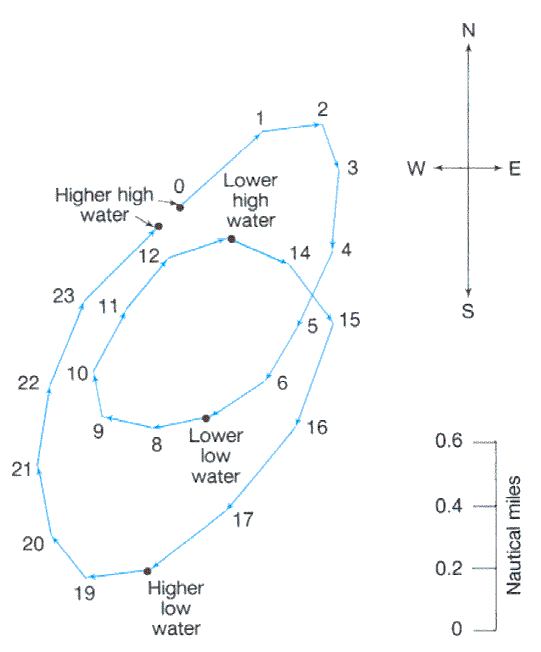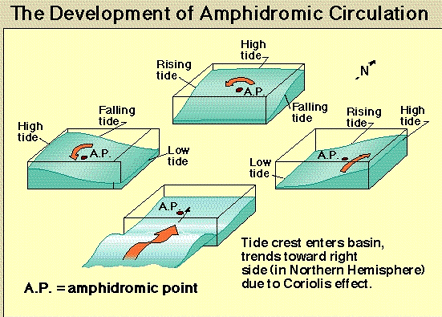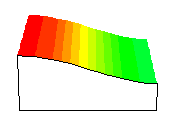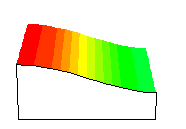 Rotary Kelvin Waves and Poincare Waves
Rotary Kelvin Waves and Poincare Waves 
On a water-covered, rotating world, tides deflected by Coriolis would set up inertial oscillations - but on Earth, the continents prevent the tide wave from circumnavigating the planet.
-
Along the edge of an ocean basin, the coastline creates a boundary.
Kelvin waves exist where a lateral boundary occurs.
-
Wave propagation is parallel to the boundary -- theoretically, counter-clockwise in the Northern Hemisphere, and clockwise in the Southern Hemisphere. (Large islands, e.g. Madagascar, New Zealand, and unconstrained systems may rotate in the opposite direction.) The Coriolis parameter changes sign at the equator, so the equator also acts as a boundary.
-
Maximum amplitudes occur at the boundary, and die off with increasing distance from shore
-
Amphidromic points actually result from the destructive interference of tidal Kelvin waves
Far from boundaries:

Coriolis deflection results in a circular path (J. Pinckney, Texas A & M University)

(http://www.jochemnet.de/fiu/OCB3043_12.html)
No rotation

With rotation:
 (Animations by M. Tomczak)
(Animations by M. Tomczak)